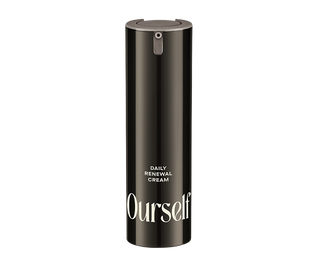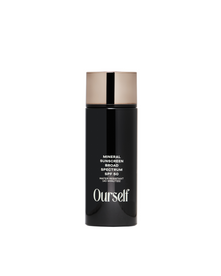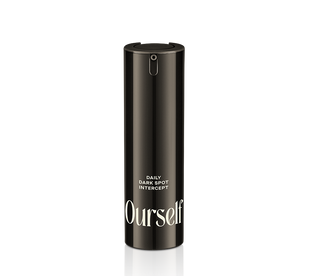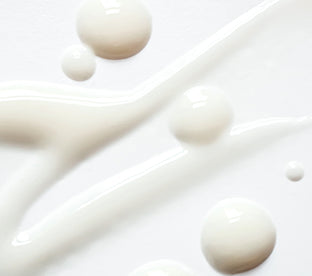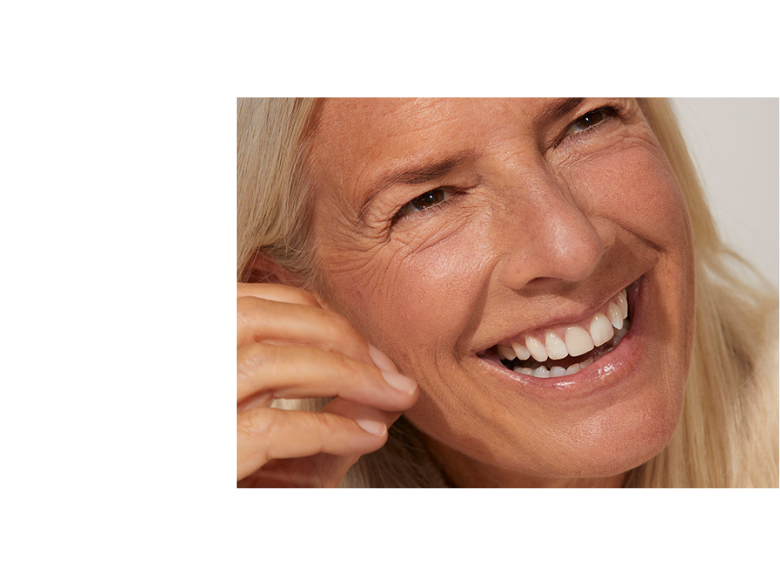
IT SEEMS LIKE EVERYONE IS SEARCHING FOR A BRIGHTER, more even skin tone. BUT HOW DO WE GET THOSE ANNOYING DARK SPOTS THAT GET IN THE WAY?
"Out, damned spot! Out, I say!" That was Lady Macbeth way back when, but who hasn't noticed a slight smudge in the mirror and had the same unhinged reaction? Dark spots and skin discolorations can appear at any age, on any gender, and on any skin tone or ethnicity. There are treatments that help erase certain types of spots, but how can you tell which works on which? We're here to help. We consider ourselves quite the hyperpigmentation experts but P.S.A. alert: we're not medical pros, so dial up your derm doc if you have questions...or questionable spots. Okay, onward!
Where do Dark Spots Come From?
Buckle in, it's science time. As you may know, the sun's UV rays can damage proteins in your skin, including your actual dermal DNA. Nature provided our bodies with a powerful defense against this damage, in the form of melanin. Melanin is a pigment that is able to absorb those UV rays and keep skin safer. It’s also what creates the color of our eyes, hair and skin.
When all is "normal," skin produces its regular amount of melanin, which varies widely from person to person — those of us with deep skin tones have more natural melanin and fairer folk have less. Now, when skin is exposed to UV, it senses that it needs more protection, so it ramps up melanin production. Many people will see this as the "tan" that forms a few hours after sun exposure. That tan is your skin working to reduce sun damage! (This is not permission to tan. By the time you see the tan, the damage is already done, ahem.)
The trick is what happens when all is not normal. First, let's dig deeper into exactly how melanin is produced. It begins with cells called melanocytes which actually create the individual particles of pigment. The particles are then gathered into packets called melanosomes, where the bits of pigment are packed densely enough to shield against the UV rays. The melanosomes are then transported to the right place within skin to protect the cells.
Normally, you can't see melanosomes, or the melanin inside, with the naked eye. It's not until skin starts to OVER-produce melanin, creating more than the system can handle, that the melanosomes start to become visible, either as spots when they are concentrated in a small area, or as a broader patch of discoloration when they are more spread out. It's all in the name: hyper- means "over" or "too much," so hyperpigmentation is just having an over-abundance of pigmentation compared to your normal baseline. BTW, hyperpigmentation is the catch-all term derms use for any type of spots or discoloration linked with melanin.
What causes skin to overproduce melanin?
UV rays are always the prime suspect. But we're learning that any kind of skin irritation, from the inflammation of acne to oxidative damage from pollution and blue light can impact melanin overproduction. Hormone ebbs and flows can also have an effect (many pregnant women experience melasma, a specific form of hyperpigmentation). And age plays a role, too, because over time the finely balanced process can start to break down—the on/off switches don't work consistently, the packing and transporting of the melanosomes gets confused, and the system for getting rid of the melanin after its mission is completed starts to falter.
Hyperpigmentation and skintone
While some types of hyperpigmentation may appear more obviously on paler skin, discoloration can affect all skin tones, and in different ways. For example, Black and brown skin is especially prone to forming dark spots after an acne attack, and the presence of more melanin in darker skin means hyperpigmentation is more common among people of color. Lasers are an effective treatment for removing dark spots on lighter skin tones, but for decades, many of them have not been appropriate for darker skin tones. While there has been technological progress in recent years, we suggest using a potent yet safe enough to use at-home peel formulated for ALL skin tones and a Daily Dark Spot Intercept to help prevent them from forming in the first place.
Okay, let's recap…
Melanin is our skin's amazing natural defense against UV rays, and we love it because it gives us our unique appearance. But with sun damage, inflammation and time, skin's natural melanin mechanisms lose control. Excess melanin is produced and travels to the surface of the skin, eventually becoming visible as dark spots and discolorations.
